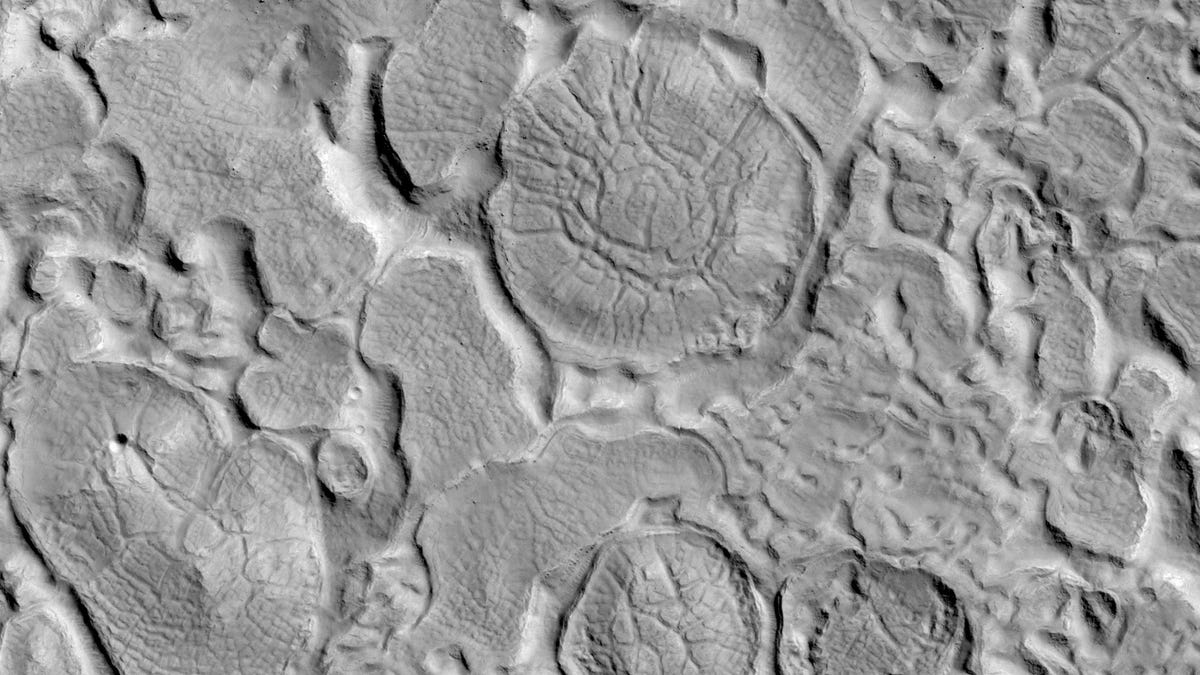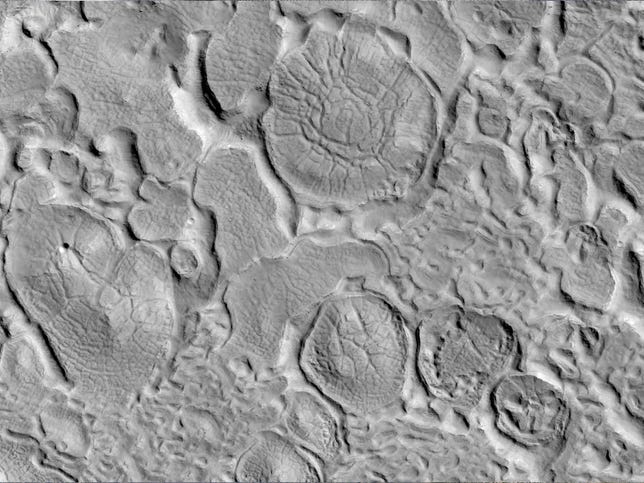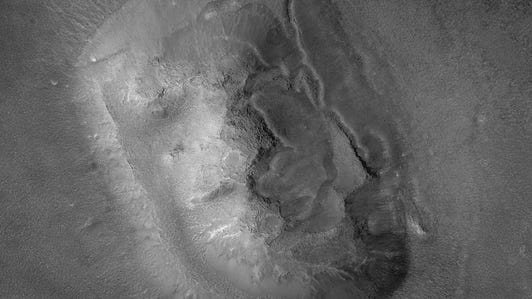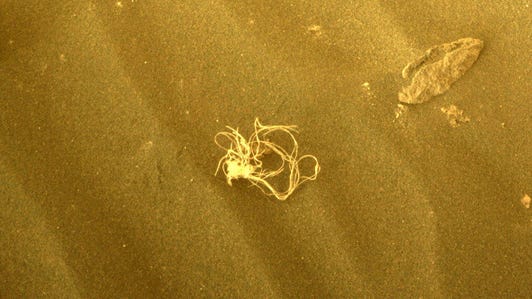
An odd Martian landscape may be an icy place.
NASA/JPL-Caltech/UArizona
This story is part of Welcome to Mars, our series exploring the red planet.
Mars landscapes have a different kind of beauty than the ones we have on Earth. The red planet might not sport dazzling oceans and grand green spaces, but it features a stunning variety of wild and wonderful surface formations. A particularly unusual area is the star of a NASA Mars Reconnaissance Orbiter image shared this week showing “bizarre icy landforms.”

 Enlarge Image
Enlarge Image
Enlarge this view for a better look at the oddball formations seen on an icy part of Mars.
NASA/JPL-Caltech/UArizona
MRO’s HiRise camera is run by a team at the University of Arizona. MRO snapped the funky image in November 2022 and it was featured as an image of the day on Thursday.
The full view shows what the HiRise team describes as roundish landforms covered by polygons with surrounding trenches. Taken out of context, you might think the image shows a drying mud bed or a zoomed-in look at the top of a puffball mushroom.
The unusual formations are located in the middle latitudes of Mars. “This latitude is where significant ground ice has formed and may still be present, and where the temperatures were sometimes high enough in the recent past for ice to flow,” the HiRise team wrote.
59 Weird Objects Seen on Mars, Explained




+59 more
See all photos
Natural processes are responsible for the fun and funky shapes on display. “Some combination of ice expansion and contraction, sublimation, and flow may have created this landscape,” the HiRise team suggested. Sublimation occurs when a solid transforms directly into a gas. It’s a process that has helped sculpt some wild formations on Mars, like the Happy Face Crater.
MRO’s work has illuminated the variety of Martian landscapes. It’s been in orbit around the red planet since 2006 and continues to build on its legacy of stunning science.
